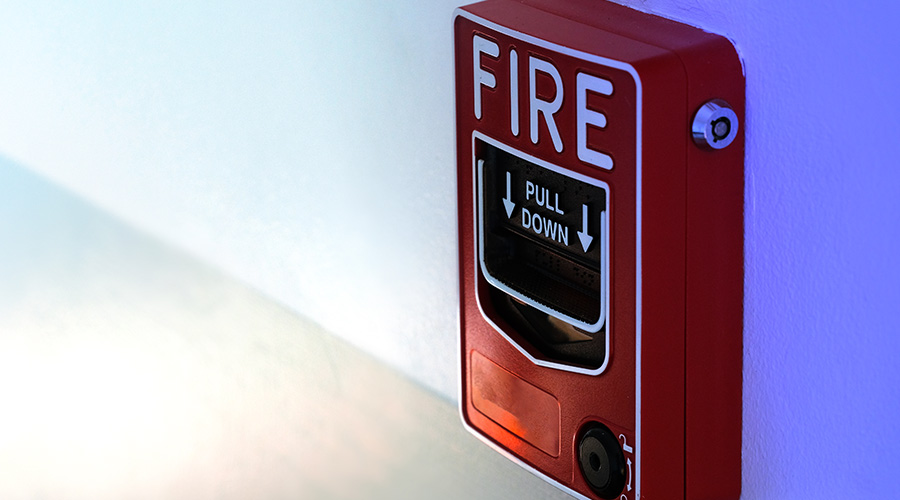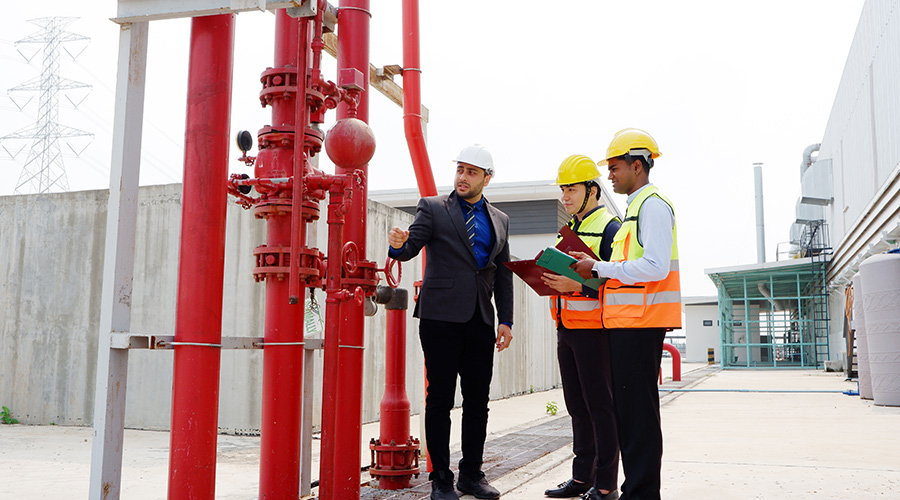Maintenance, Commissioning Of Fire Protection Systems Can Help Reduce Costs
Smoke detectors are often added as common industry practice — even without a code requirement. Break rooms, corridors, electrical, and server rooms are all common locations for non-required smoke detectors. Also, duct smoke detectors are commonly provided in air handling systems that don’t require them, or on both the supply and return when only one is required. Installing only required smoke detectors will not only decrease costs, but will also reduce the number of nuisance alarms.
Notorious for creating maintenance issues, sprinkler drains and test connections are aspects of fire protection that can provide design problems as well. Because the rusty water discharge can erode the landscape or create icy conditions on sidewalks, it is important to ensure the water is discharged to a safe area.
Mislabeled or unlabeled systems create headaches and escalate costs. Fire alarm, fire suppression, and passive fire protection systems are often not labeled, which increases the time it takes to test and troubleshoot problems. Additionally, ensuring fire systems are coordinated with the clearance requirements of other systems is important as well. Taking the time to coordinate these items during shop drawing review can save time and money during construction.
Requiring additional spare parts on the project — including components above and beyond what’s required by code minimums — is a must. For example, in addition to spare sprinkler heads and wrenches required by NFPA 13, consider adding a spare cabinet to house an escutcheon for each spare sprinkler. For fire alarms, a minimum of one spare device is recommended for each type of initiating and notification device in the system. This will make for quick repairs by having on hand all the components listed for use with the system.
The importance of a fully coordinated building fire protection system is often overlooked because of the multi-disciplinary nature of fire protection. As a result, building fire protection is oftentimes not addressed in a holistic manner that looks for opportunities to reduce costs or increase the long-term durability. Begin your next project using a holistic approach and finish it off with a thorough commissioning effort (see sidebar on this page) to make for a successful, fully code-compliant project.
Don’t Neglect Commissioning
One commonly overlooked aspect of fire protection systems is commissioning. The building owner receives the acceptance testing certificate and assumes the building system is good to go — but it’s important to keep in mind acceptance testing is the bare minimum. Third-party commissioning can provide additional value to the project.
Commissioning ensures each device is physically tested in accordance with the requirements of NFPA 25, 72, and other applicable codes and standards. Physical testing may include items such as operating sprinkler system valves and alarm devices, verifying operation of detectors and correct reporting to the fire alarm system, and verifying the integrity of the fire alarm circuits. Commissioning also confirms that the correct materials were installed in accordance with the approved drawings and looks at field conditions that may not have been apparent during shop drawing review. Most importantly, third-party commissioning agents ensure there are no surprises during acceptance testing, allowing the owner to occupy the building without delays. ■
Tony Schoenecker, PE, is senior fire protection engineer for Burns & McDonnell in Minneapolis.
Related Topics:













